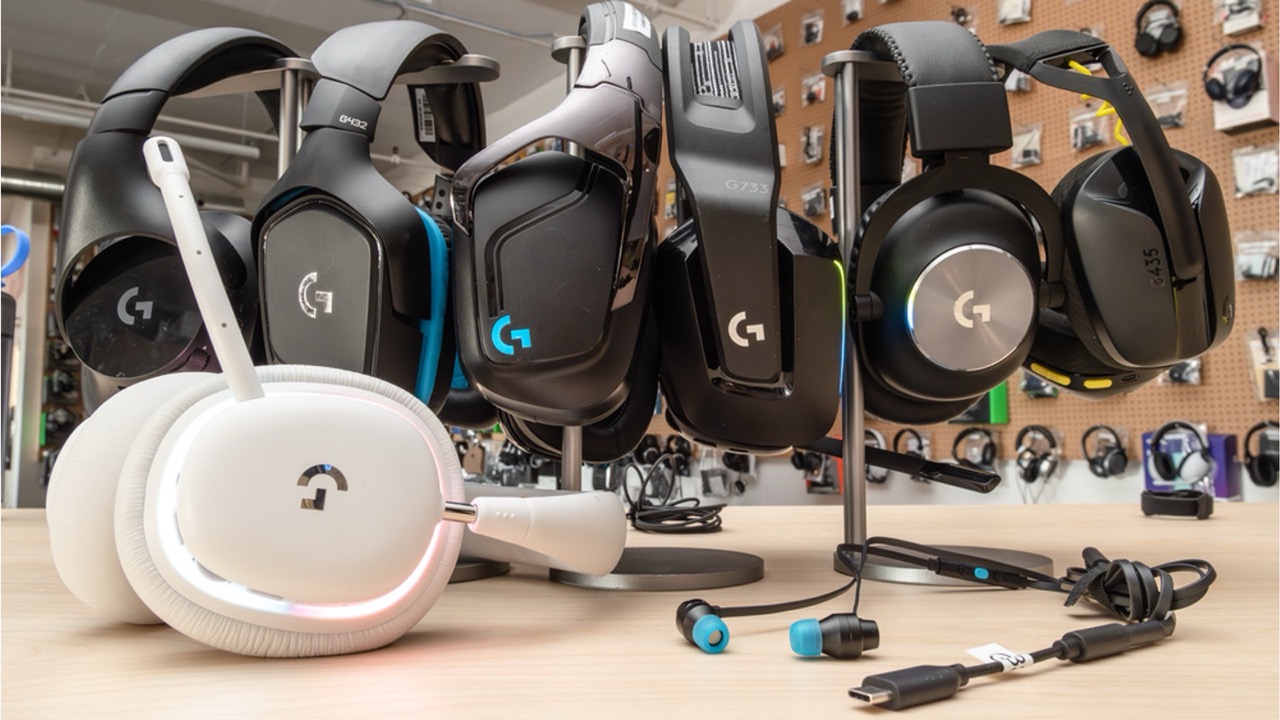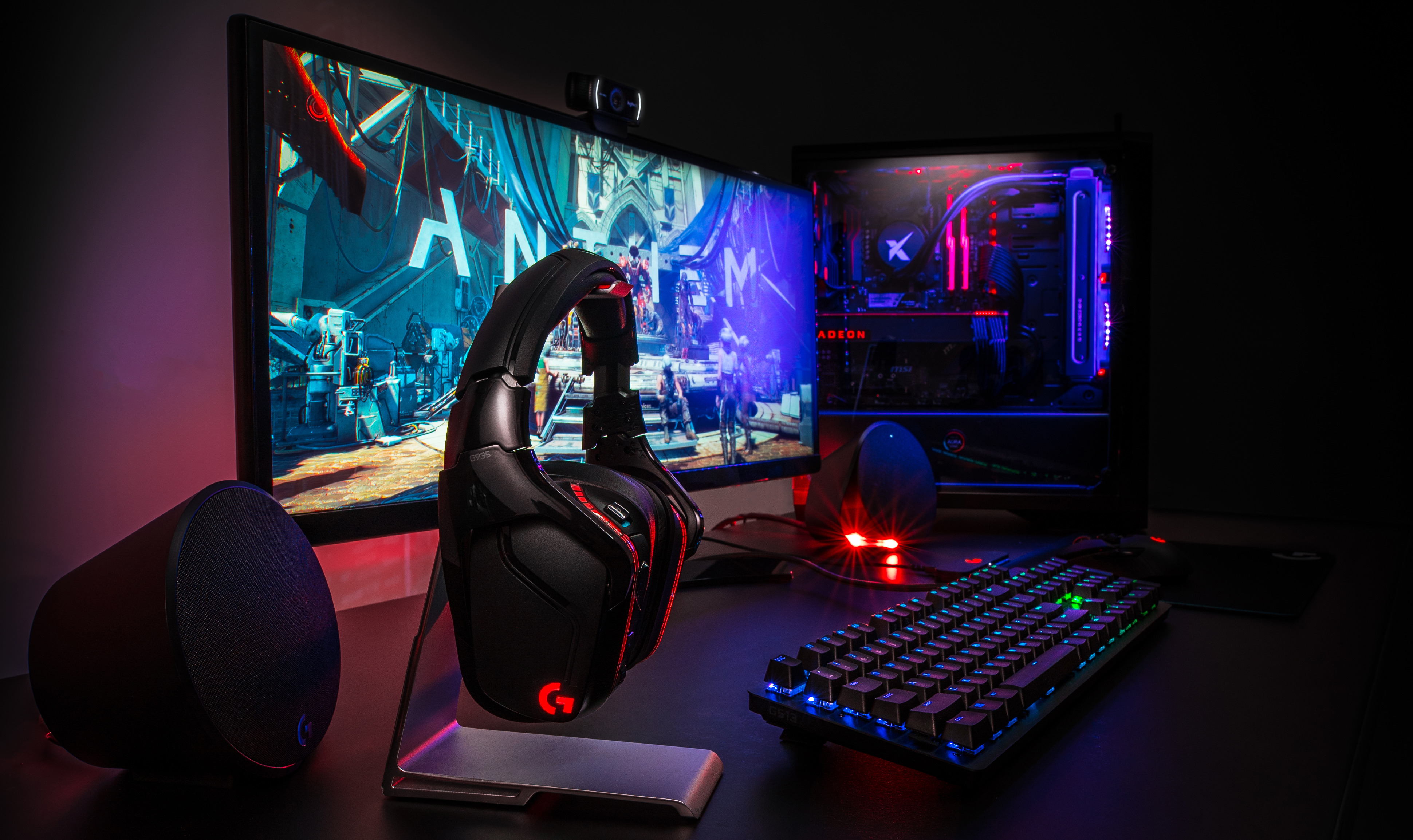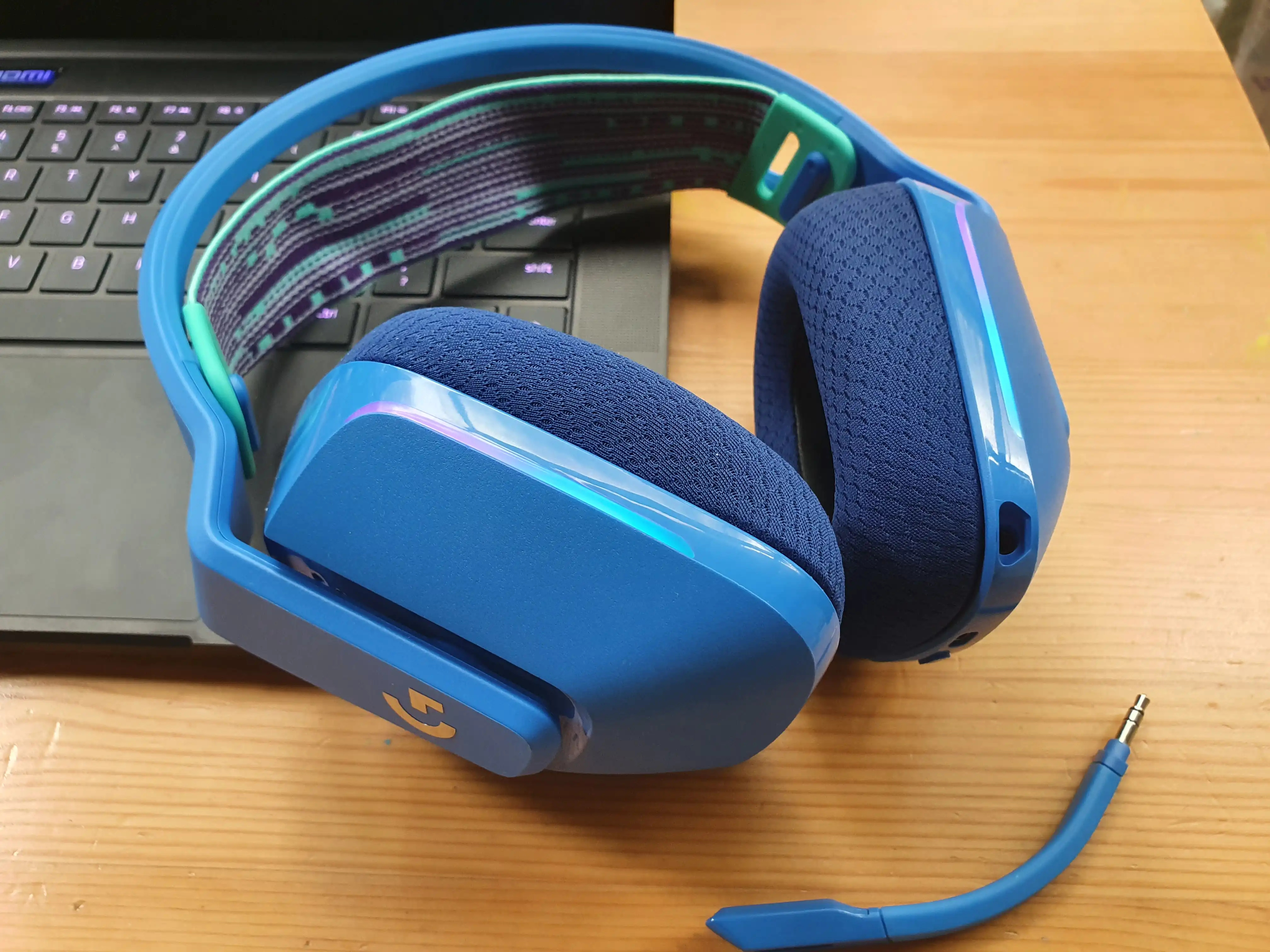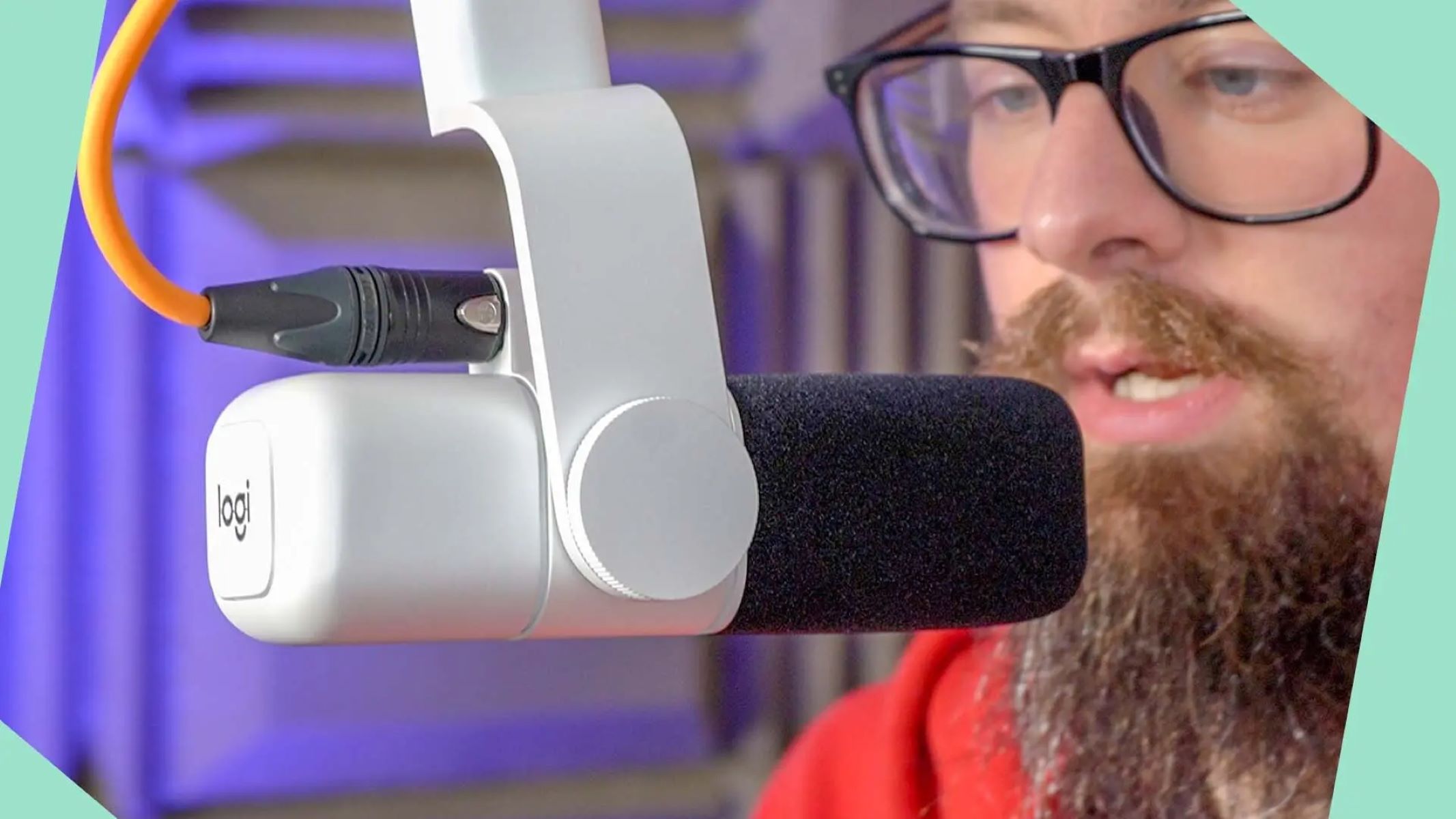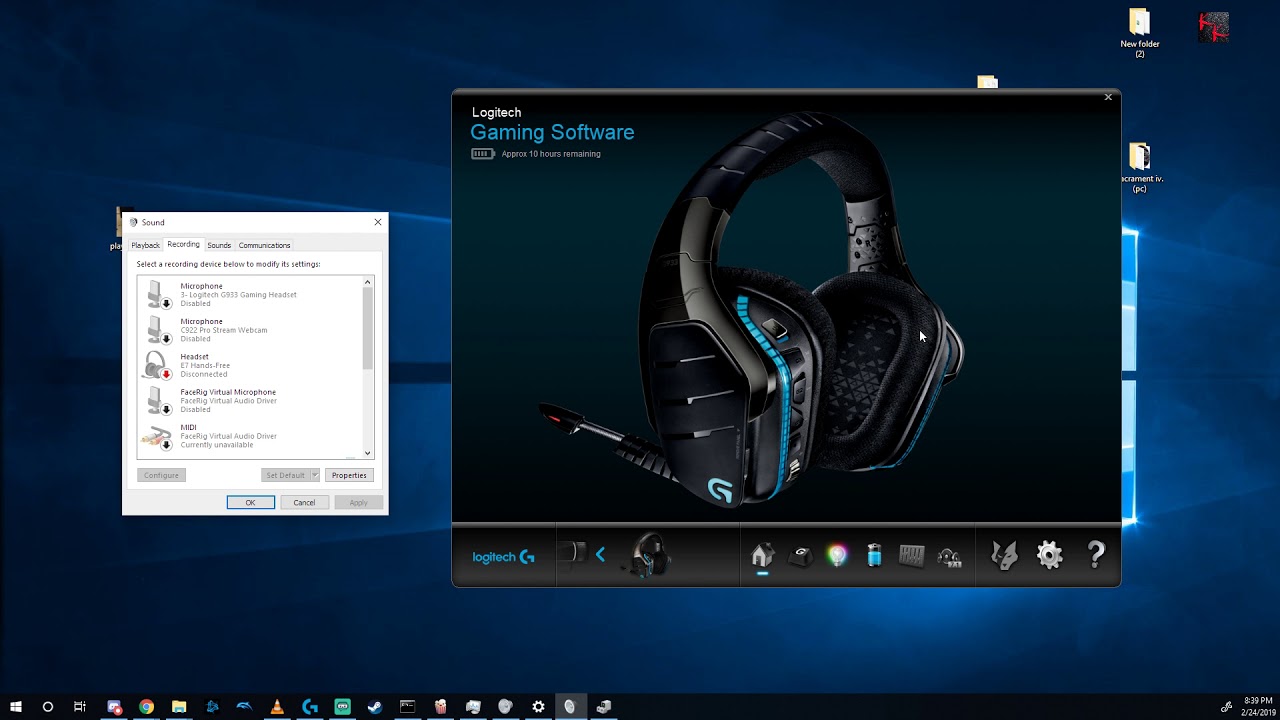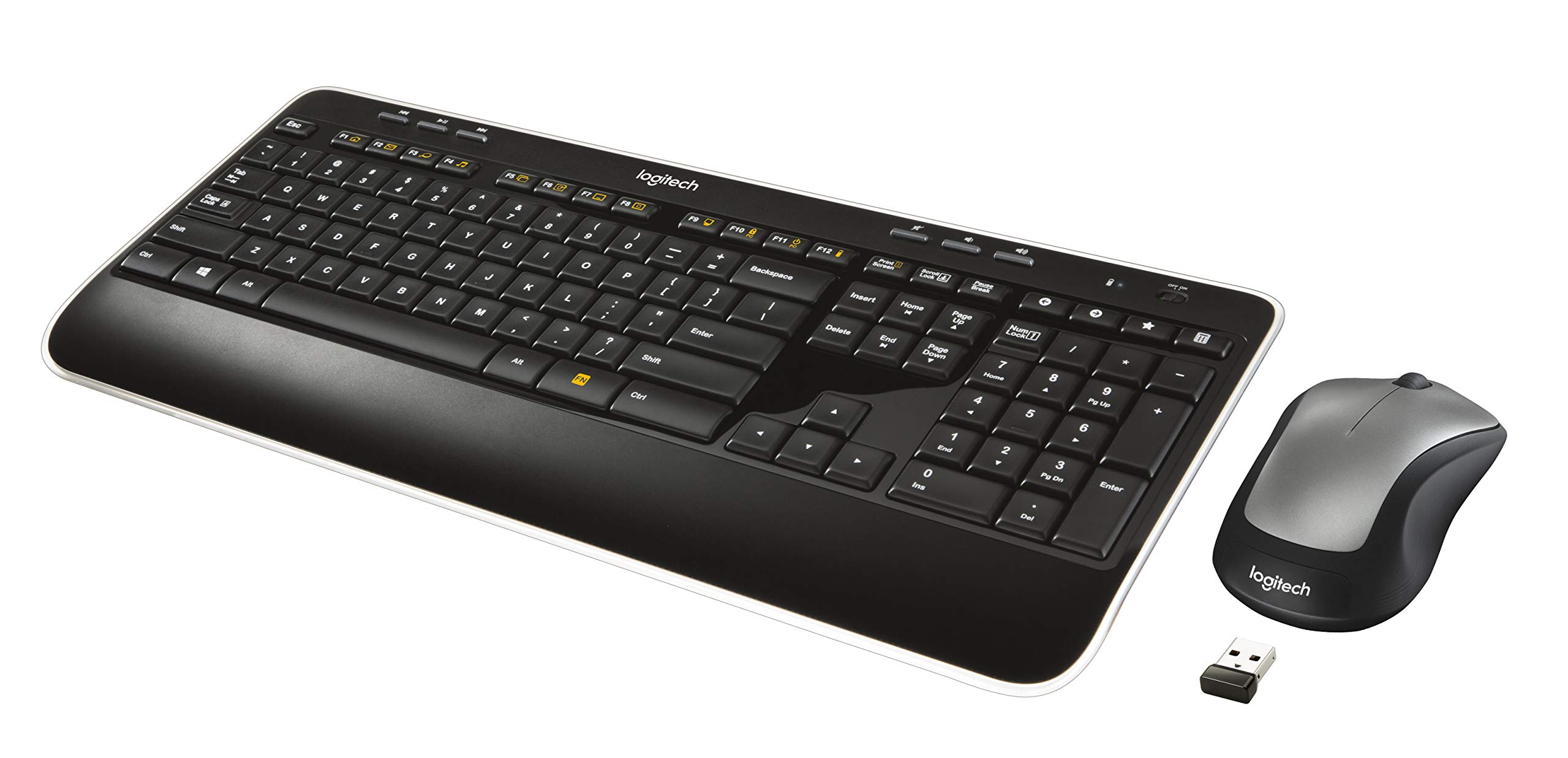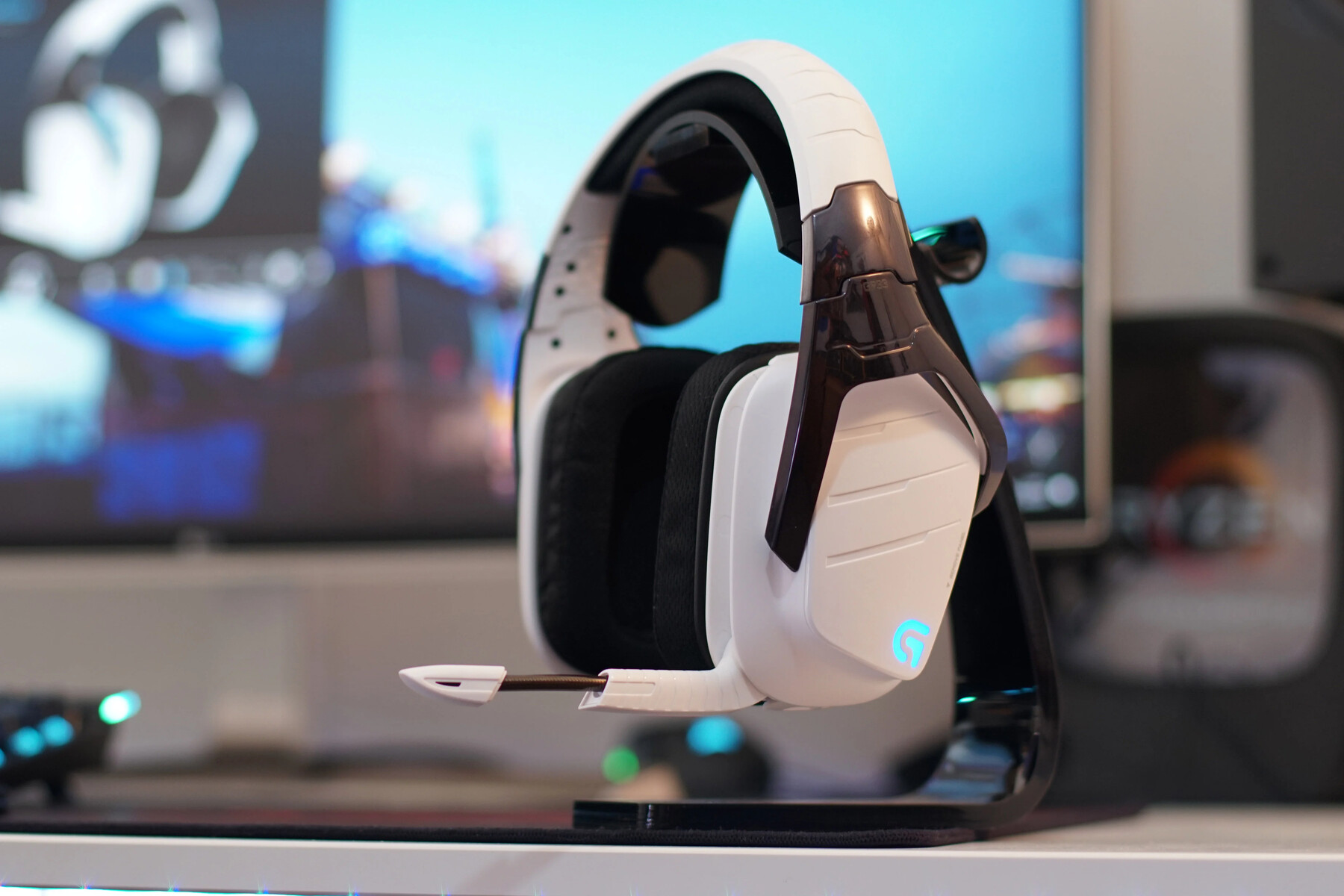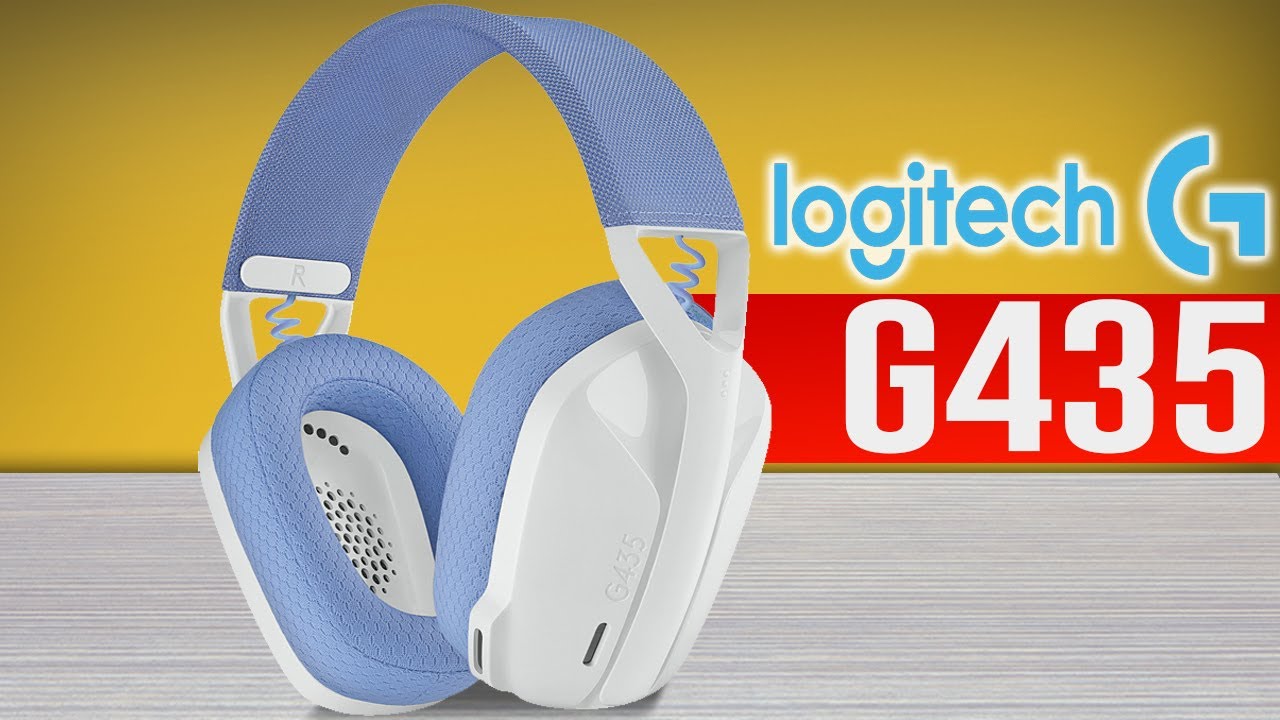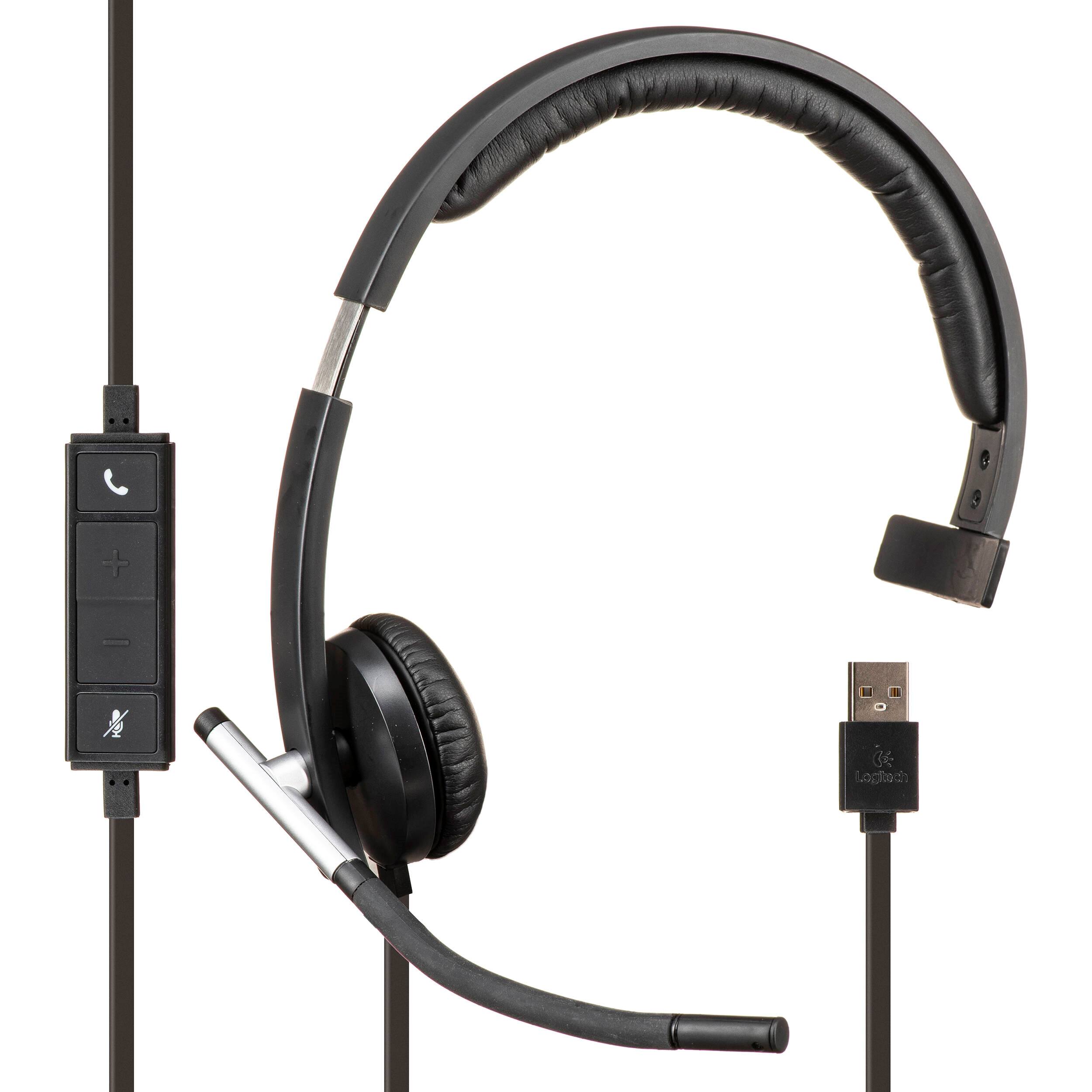Introduction
When it comes to immersing yourself in the digital realm, a high-quality headset can make all the difference. Whether you're engaging in intense gaming sessions, participating in virtual meetings, or simply enjoying your favorite tunes, a reliable headset can elevate the entire experience. Logitech, a renowned name in the realm of technology and peripherals, offers a range of headsets designed to deliver exceptional audio quality and comfort.
In this comprehensive guide, we'll delve into the process of setting up your Logitech headset, ensuring that you can seamlessly integrate it into your digital lifestyle. From checking compatibility and connecting the headset to adjusting settings and troubleshooting common issues, we've got you covered every step of the way.
By the time you've finished reading this guide, you'll be well-equipped to make the most of your Logitech headset, unlocking its full potential and enjoying crystal-clear audio in all your digital endeavors. So, let's embark on this journey together and make sure your Logitech headset becomes an indispensable companion in your tech arsenal.
Checking Compatibility
Before diving into the setup process for your Logitech headset, it's crucial to ensure that it is compatible with your device. Logitech offers a diverse range of headsets, each tailored to different platforms and devices, so verifying compatibility is the first step to a seamless setup.
Compatibility with Devices
Logitech headsets are designed to work with a variety of devices, including PCs, laptops, gaming consoles, and mobile devices. It's important to check the specifications of your specific Logitech headset model to confirm its compatibility with your intended device. Some headsets are optimized for PCs and laptops, while others are compatible with gaming consoles such as Xbox and PlayStation. Additionally, certain models are equipped with Bluetooth connectivity, making them suitable for use with smartphones and tablets.
Operating System Compatibility
In addition to device compatibility, it's essential to consider the operating system of your device. Logitech headsets are engineered to function seamlessly with popular operating systems such as Windows, macOS, and Linux. Whether you're a Windows enthusiast, a dedicated macOS user, or an advocate of open-source software, Logitech ensures that its headsets are compatible with a wide range of operating systems, providing versatility and flexibility for users across different platforms.
Audio Connectivity
Another aspect of compatibility to consider is the audio connectivity options supported by your device. Logitech headsets utilize various connection methods, including USB, 3.5mm audio jack, and wireless Bluetooth technology. Ensuring that your device supports the specific audio connectivity option of your Logitech headset is crucial for establishing a reliable audio connection and optimizing the overall audio experience.
By thoroughly assessing the compatibility of your Logitech headset with your device, operating system, and audio connectivity options, you can lay a solid foundation for a successful setup process. Once you've confirmed compatibility, you're ready to proceed to the next step of connecting your Logitech headset and immersing yourself in a world of exceptional audio quality and comfort.
Connecting the Headset
Now that you've confirmed the compatibility of your Logitech headset with your device, it's time to delve into the process of connecting the headset and establishing a seamless audio experience. Whether you're using a wired or wireless Logitech headset, the setup process is designed to be straightforward, allowing you to effortlessly integrate the headset into your digital environment.
Wired Headset Connection
If you're using a wired Logitech headset with a 3.5mm audio jack, the connection process is remarkably simple. Begin by locating the 3.5mm audio jack on your headset, typically positioned along the cable or on the ear cup. Next, identify the corresponding audio input on your device, which is commonly found on the front or rear panel of a desktop PC, the side of a laptop, or the controller of a gaming console. Once you've located the audio input, insert the 3.5mm connector into the port, ensuring a secure and snug fit.
For Logitech headsets equipped with a USB connector, the process is equally straightforward. Simply plug the USB connector into an available USB port on your device, allowing the operating system to detect and configure the headset automatically. This plug-and-play functionality streamlines the setup process, eliminating the need for intricate configurations or manual driver installations.
Wireless Headset Connection
For wireless Logitech headsets utilizing Bluetooth connectivity, the setup process involves a few additional steps to establish a wireless link with your device. Begin by activating the Bluetooth function on your device, typically found in the system settings or control panel. Next, put your Logitech headset into pairing mode, which may involve pressing and holding a designated button or following specific instructions outlined in the headset's user manual. Once the headset is in pairing mode, your device should detect and display the headset as an available Bluetooth device. Select the headset from the list of available devices to initiate the pairing process, establishing a secure wireless connection for audio transmission.
Optimizing Audio Settings
After successfully connecting your Logitech headset to your device, it's beneficial to explore the audio settings to ensure an optimal listening experience. Depending on your operating system and device, you can access audio settings to adjust volume levels, microphone input, equalization presets, and spatial audio enhancements. By fine-tuning these settings, you can personalize the audio output to suit your preferences, whether you're engaging in immersive gaming, enjoying multimedia content, or participating in virtual meetings.
By following these steps, you can seamlessly connect your Logitech headset to your device, whether it's a wired or wireless model, and fine-tune the audio settings to unlock its full potential. With the headset successfully connected and the audio settings optimized, you're ready to immerse yourself in a world of exceptional audio quality and comfort, courtesy of your Logitech headset.
Adjusting Settings
Once your Logitech headset is successfully connected to your device, delving into the realm of audio settings can significantly enhance your listening experience. Whether you're fine-tuning audio levels, optimizing microphone input, or experimenting with equalization presets, adjusting settings allows you to tailor the audio output to your preferences and the specific nature of your digital activities.
Volume and Equalization
Adjusting the volume levels on your Logitech headset is the first step in customizing your audio experience. Whether you prefer booming bass for immersive gaming or balanced frequencies for music appreciation, finding the optimal volume setting is crucial. Additionally, many Logitech headsets offer equalization presets, enabling you to select audio profiles tailored to different content types. For instance, gaming presets may emphasize spatial awareness and dynamic sound effects, while music presets can accentuate clarity and tonal accuracy.
Microphone Input
For headsets equipped with a microphone, adjusting the input levels ensures that your voice is captured clearly during voice calls, gaming communication, or content creation. Logitech headsets often feature noise-canceling microphones, which can be further optimized through settings to minimize background noise and focus on vocal clarity. Fine-tuning microphone input levels and noise-canceling features contributes to seamless communication and content creation, enhancing the overall utility of your Logitech headset.
Spatial Audio and Surround Sound
Certain Logitech headsets offer spatial audio and surround sound capabilities, delivering an immersive audio environment for gaming and multimedia content. Adjusting these settings allows you to fine-tune the spatial audio effects, virtual surround sound, and positional accuracy, heightening the sense of immersion and spatial awareness during gameplay or movie viewing. By experimenting with these settings, you can create a captivating audio experience that transcends traditional stereo output.
Device-Specific Customizations
Depending on your device and operating system, there may be additional settings tailored to Logitech headsets. These can include specialized audio control panels, proprietary software interfaces, and compatibility optimizations. Exploring these device-specific settings allows you to leverage advanced features, such as customizable lighting effects, voice modulation, and advanced audio processing, enriching the versatility of your Logitech headset and unlocking its full potential.
By venturing into the realm of audio settings and customizations, you can transform your Logitech headset into a personalized audio powerhouse, perfectly aligned with your digital pursuits and entertainment preferences. The ability to fine-tune volume, microphone input, equalization, spatial audio, and device-specific features empowers you to create an audio environment that complements your unique preferences and elevates your overall digital experience.
Troubleshooting Common Issues
Even with the seamless setup and optimal settings, occasional technical hiccups may arise when using your Logitech headset. Understanding and addressing these common issues can ensure a consistently smooth and enjoyable audio experience.
No Audio Output
If you encounter a situation where your Logitech headset fails to produce any audio output, several troubleshooting steps can help resolve this issue. Begin by checking the physical connections between the headset and your device. Ensure that the 3.5mm audio jack or USB connector is securely plugged in, and if you're using a wireless headset, verify that the Bluetooth connection is stable.
Next, confirm that the volume levels on both your headset and the device are appropriately adjusted. In some cases, audio output issues may stem from muted settings or low volume levels. Additionally, exploring the audio settings on your device to select the Logitech headset as the default audio output device can rectify any potential routing issues.
Microphone Malfunctions
For Logitech headsets equipped with a microphone, encountering issues with microphone functionality can impede communication and content creation. If you experience difficulties with microphone input, start by inspecting the physical integrity of the microphone boom. Ensure that it is securely attached to the headset and positioned correctly for optimal voice capture.
Further troubleshooting involves checking the device settings to confirm that the Logitech headset microphone is selected as the default input device. Adjusting microphone input levels and noise-canceling settings within the device's audio settings can also address issues related to muffled or distorted voice capture.
Connectivity Challenges
In the case of wireless Logitech headsets, connectivity challenges may arise, leading to intermittent audio dropouts or unstable connections. If you encounter connectivity issues, begin by ensuring that the headset's battery is adequately charged. Weak battery levels can contribute to unreliable Bluetooth connections and audio interruptions.
Additionally, verifying that the headset is within the recommended range of the paired device and free from obstructions that may interfere with the wireless signal is essential. If persistent connectivity issues persist, performing a reset on the headset and re-establishing the Bluetooth pairing can often restore stable wireless communication.
Driver and Software Updates
Keeping the drivers and firmware of your Logitech headset up to date is crucial for optimal performance and compatibility. If you encounter persistent issues, visiting the official Logitech support website to download and install the latest drivers and firmware updates specific to your headset model can often resolve underlying technical issues and enhance overall functionality.
By addressing these common issues through systematic troubleshooting, you can ensure that your Logitech headset consistently delivers exceptional audio quality and functionality, allowing you to enjoy uninterrupted digital experiences across gaming, multimedia consumption, and communication platforms.







